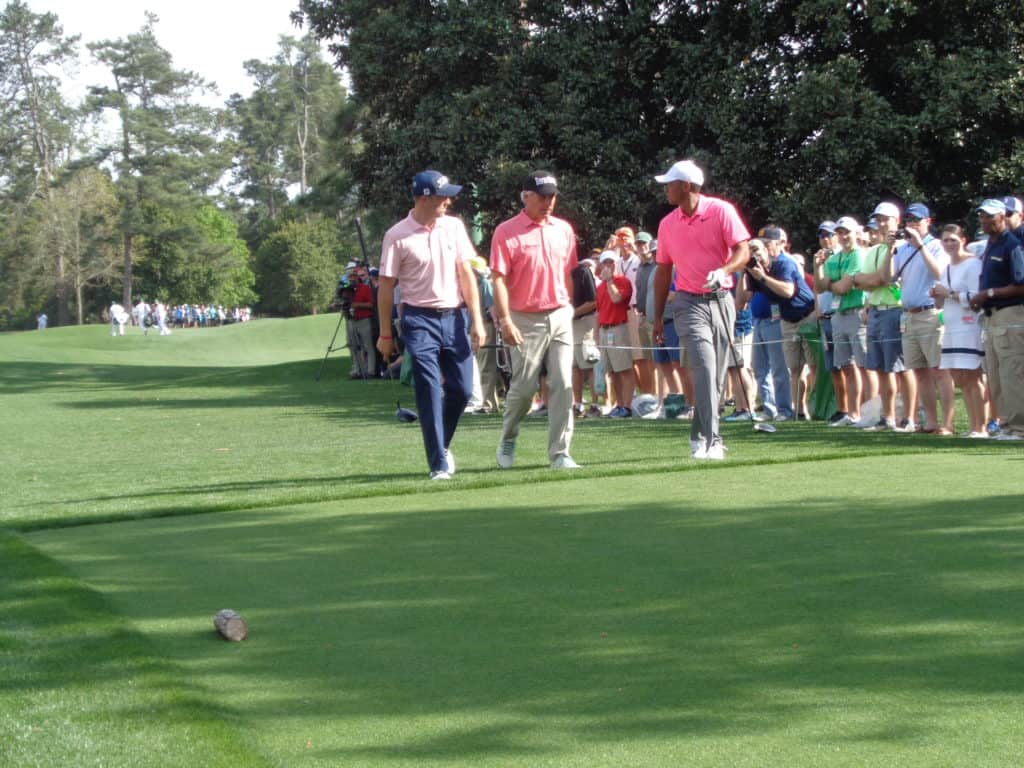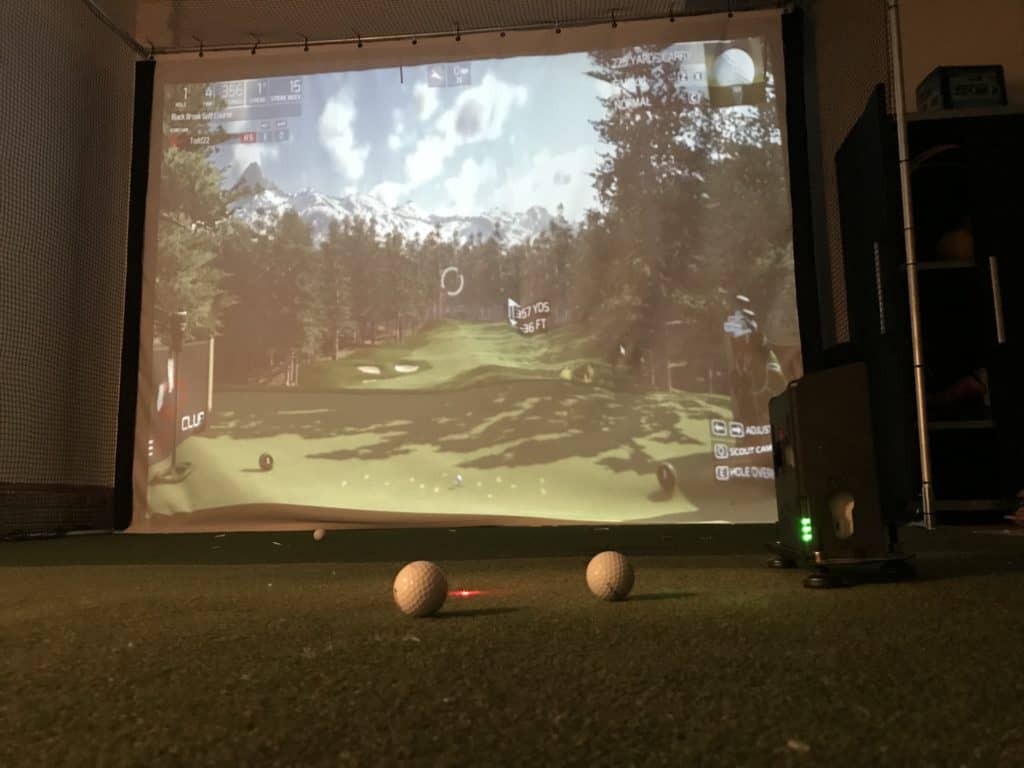Everyone wants more speed in their golf swing.
Why? Because this will result in more distance.
More distance off the tee, leads to shorter approach shots. As a result, you hit the ball closer and have a higher chance of making more putts (All proven by analytics).
The end results equals lower scores!
The golfer is happy and pleased and continues on their journey to fine tuning another part of the game because golfers aren’t really ever content!
So, how do you generate speed in the golf swing?
There are 4 swing methods to generate speed. These include the following swings:
- Body Rotation
- Arms and Hands
- Separation Swing
- Directing Momentum
Below, I will dive into each of these 4 swing methods to help you determine which swing is best to help you generate speed and distance in your golf swing. Within each section, I will give you the following:
- How this swing method generates speed
- Professional golfers who use this swing method
- A quality online instructor to help you better understand this swing method
At the end, I do give you my number one swing increasing training tool that has helped me add 7-10 miles per hour in my golf swing!
Golfers are all looking for speed.
There isn’t necessarily one best way to generate speed through a swing method, but regardless of your swing method of choice, you can train for additional speed through overspeed training. See the SuperSpeed Golf section at the end.

How To Generate Speed in Golf Swing
Method 1: Body Rotation
This method is very popular among the George Gankas and Milo Lines followers. The swing system is based on getting a complete turn on the backswing, squatting slightly into the ground and then rotation through the ball.
The arms feel like they stay back at the beginning of the downswing and then ride along the body through the swing. You can generate a good amount of speed as displayed by Matt Wolff who generates a ton of speed for his size.
This rotational type of swing can help stabilize the face before, during and after impact. This helps the golfer with consistency and utilizes his or her body to generate. You will often hear those that prefer this method stating that it is easier to control your bigger muscles under pressure than your smaller, quick twitch muscles when the pressure is on.
The legs play a big role in the swing as you will often hear golfers speak to the ground forces and utilizing the ground to generate more speed.
Lee Trevino stood open, and then turned hard through the ball to generate his speed. He was able to stabilize his golf club head with this swing. He relied on a soft fade.
The two best golf instructors we have found in this swing method are George Gankas and Milo Lines. They both can generate a significant amount of speed in their own golf swings.
Method 2: Hands and Arms
This swing utilizes the body as well as the hands and arms. The hands and arms swing might not be the perfect name for it. However, this swing method relies on the hands and arms to produce the speed and utilizes the body as a stabilizing force. The golfer will use the bigger shoulder muscles and arms to get to the top of the backswing.
From there, the golfer fires his or her arms and hands towards the ball to generate some impressive speed. You might be surprised what speed your can generate with just your hands and arms. Some of the instructors that teach this method will hit golf balls while sitting on a chair or down on their knees.
This shows the speed that can be generated just by the hands and arms.
Overall, for those concerned about the club head stability, more and more of these instructors are talking about the proper release, which is more palm facing target line or with the right hand slightly back. For those that grew up in the 80s and 90s reading the major golf publications, you do not need to turn your right hand over to generate the speed.
Jack Nicklaus is an example of someone that used his body to take the club back and then allowed the arms and hands to fire from the top. He is proof that the hands and arm swing also uses the body, it is just that the body doesn’t lead the arms and hands. From the top Jack Nicklaus talked about his hands and arms beating the buttons on his shirt to the ball.
The two best golf instructors with this method are Mike Bender and Kyle Morris.
Method 3: Separation Golf Swing
This golf swing was taught almost predominantly in the 1990s and early 2000s Jim McClean came on the scene with his “x factor swing.” The approach to speed or the thinking at the time was that the golfer would keep a stable base with his or her leg and turn their shoulders almost 90 degrees to the hips. This took great flexibility and removed some of the simple athletic motions of the great golf swings of the past.
They would then let the hips go and the shoulders would follow. They thought by creating this separation at the top of the swing, it would help the golfer generate speed in the upper body through the shot. It makes sense, but is difficult to do and hard on the back and body.
Method 4: Directing Momentum
This is a rather refreshing swing and one that is easy to execute for many golfers. Speed is generated by using the body to turn back and through, but more to stabilize the hands and arms vs. dragging and propelling the arms.
The golfer can swing all day long with this simple back and through motion where the arms and hands fire and the body stabilizes the swing. The body helps counteract the direction of the arms and hands similar to a whipping of the towel. The acceleration of the arms and hands helps stabilize the golf swing.
Overall, this swing is easy to repeat and generates enough speed to play the game successfully!. If you are opposed to the typical positional based golf swing, many of these instructors are about the movements more than the positions. Chasing positions in golf can become rather difficult if you are not under the helpful eye of a golf instructor.
Justin Rose and Adam Scott both direct the momentum in their golf swing. They look like they are swinging easy, but there is plenty of speed and a quality rhythm to their swing. They offset the forces in their swings.
My top two coaches that teach something similar to this method are Mike Malaska and Shawn Clement. Both use the body to turn back and through, but the throwing motion of the hands and arms are still there.
Train for Speed with SuperSpeed Golf
The great news is that once you settle in on a swing method that is best for you, it is time to start training with SuperSpeed Golf. This overspeed system based on utilize three different weighted swing sticks takes you through a protocol every other day. The golfer can expect to see a 5-8% increase in swing speed as early as the first training session, which becomes more permanent after 30 days of training.
These 15 minute protocols help train your mind and body to push the limits and get comfortable with new speeds. The green club, which is the lightest can often be swung at 15-20 miles per hour faster than your typical driver swing. Over time, the body and mind learn to swing this fast and the mind is convinced that your body can brake safely at the end of the swing!
The results are real and you can check out the chart below to see where you might match up.
| Original Swing Speed | After 4-6 Weeks | New Carry Distance | Total Distance |
| 95 | 102 | 245 | 265 |
| 100 | 108 | 259 | 279 |
| 105 | 113 | 271 | 291 |
| 110 | 118 | 283 | 303 |
Final Thoughts: How To Generate Speed in Golf
Golf is a wonderful game. We all want more speed! The great news is that there is now more clear teaching, better training tools and an overall need for additional speed. When you are willing to put the time into practicing technique and training for speed you can expect to see the results you need.
Impress your friends that you haven’t golfed with in a while the next time you play with your added speed. The question that I wonder is if you will tell them your training secrets and the method that is working for you?
Measure Your Swing
Getting feedback on your ball speed and club speed in addition to spin rate and launch angle can help take your game to the next level. Have you ever considered a portable launch monitor that can be used at home, on the range or at the course.
These impressive technology devices are worth the money and range in price from 500-2000 dollars. Check out our top 3 recommended golf launch monitors below. I built my own golf simulator space with the SkyTrak and have seen a decrease in total score by 4 shots from 76 to 72! These launch monitors are game changers and worth the investment!
Here are my top 3 recommend affordable golf launch monitors:
Good luck in your journey and check out our recipe for total game improvement below:

Take Action – What You Can Do Today to Get Better
What does this mean for you? I believe in the following recipe to get better:
1 – Improve your motion in the golf swing by identifying a golf instructor. Here are some options:
Here is a list of golf instructors that we have reviewed:
2 – Train to swing faster and improve your swing speed. Here are some options:
Looking to gain more Speed and Distance in your swing. Two Options:
3 – Understand course strategy and work to break through your next barrier. Here is a series on breaking through:
We have provided guides on how to break 100, 90, 80 and 70. Check out more below, if interested.
4 – Practice Frequently
Did you know that I build a golf simulator in my garage and have played over 500 rounds of golf on my SkyTrak system? It has been a game changer and one worth checking out. Here are some of my other posts on golf simulators frequently asked questions:
- Is a Golf Simulator Worth It?
- How to Build a Golf Simulator?
- What is the Best Golf Simulator?
- Golf Simulator Accessories?
- How to Build a Golf Simulator for under $7000
- Top 11 Reasons to Buy a SkyTrak
- How to Build a Golf Simulator for Under $1000
- Why Build A Golf Simulator?
- What Space is Needed?
- Can A Golf Simulator Improve My Game?
- How Much Does A Golf Simulator Cost?
- Don’t Forget to Check out our 15 best golf swings of all time.
I am an amateur golfer on a journey to get better, enjoy the game as often as possible and share my passion and knowledge with others. I have coached high school golfers at a high level and have a great passion for the game and want to give back. I enjoy learning about the golf swing and am currently studying to be a certified professional golf instructor. Join me in our journey to get better everyday.

